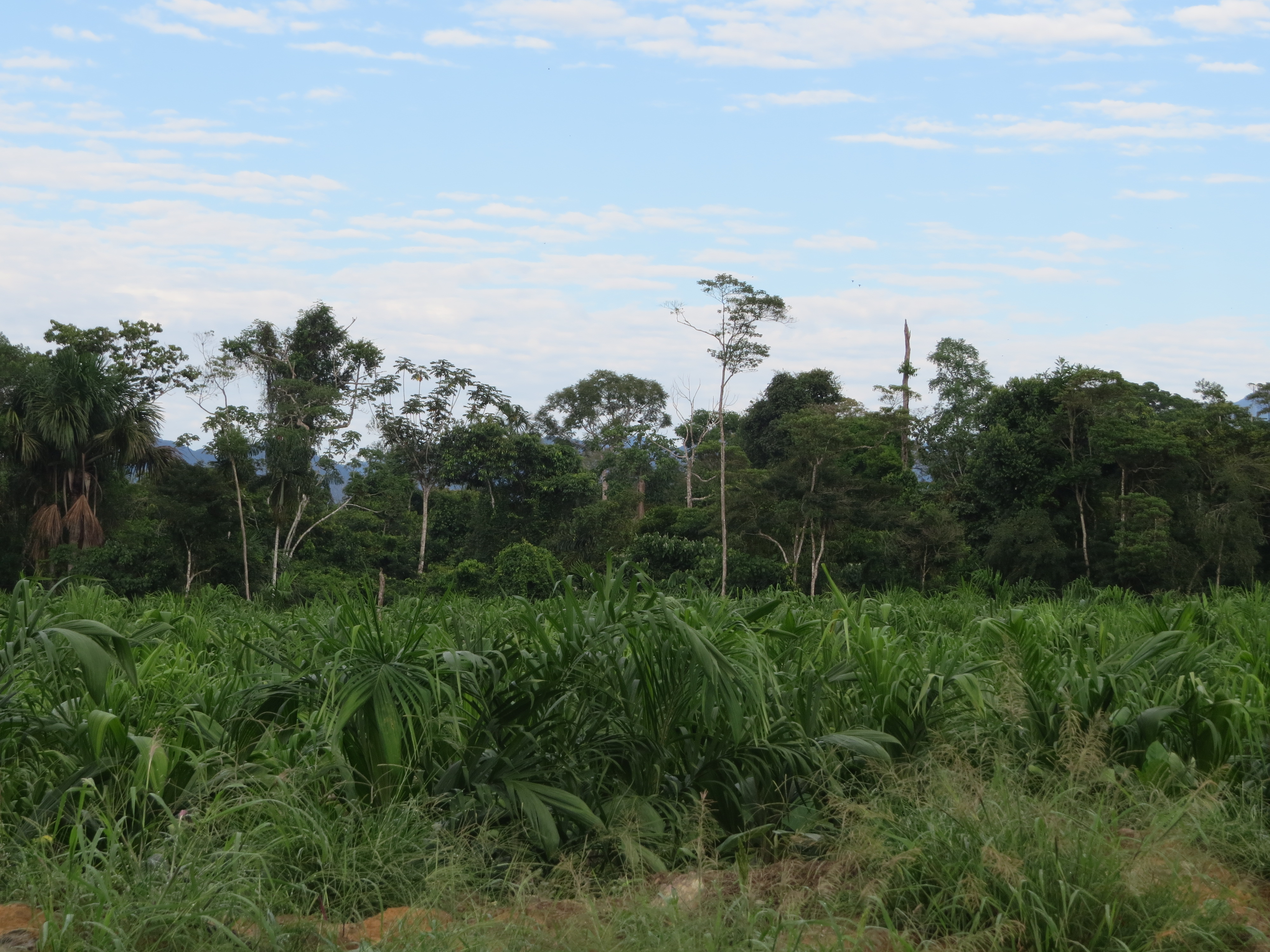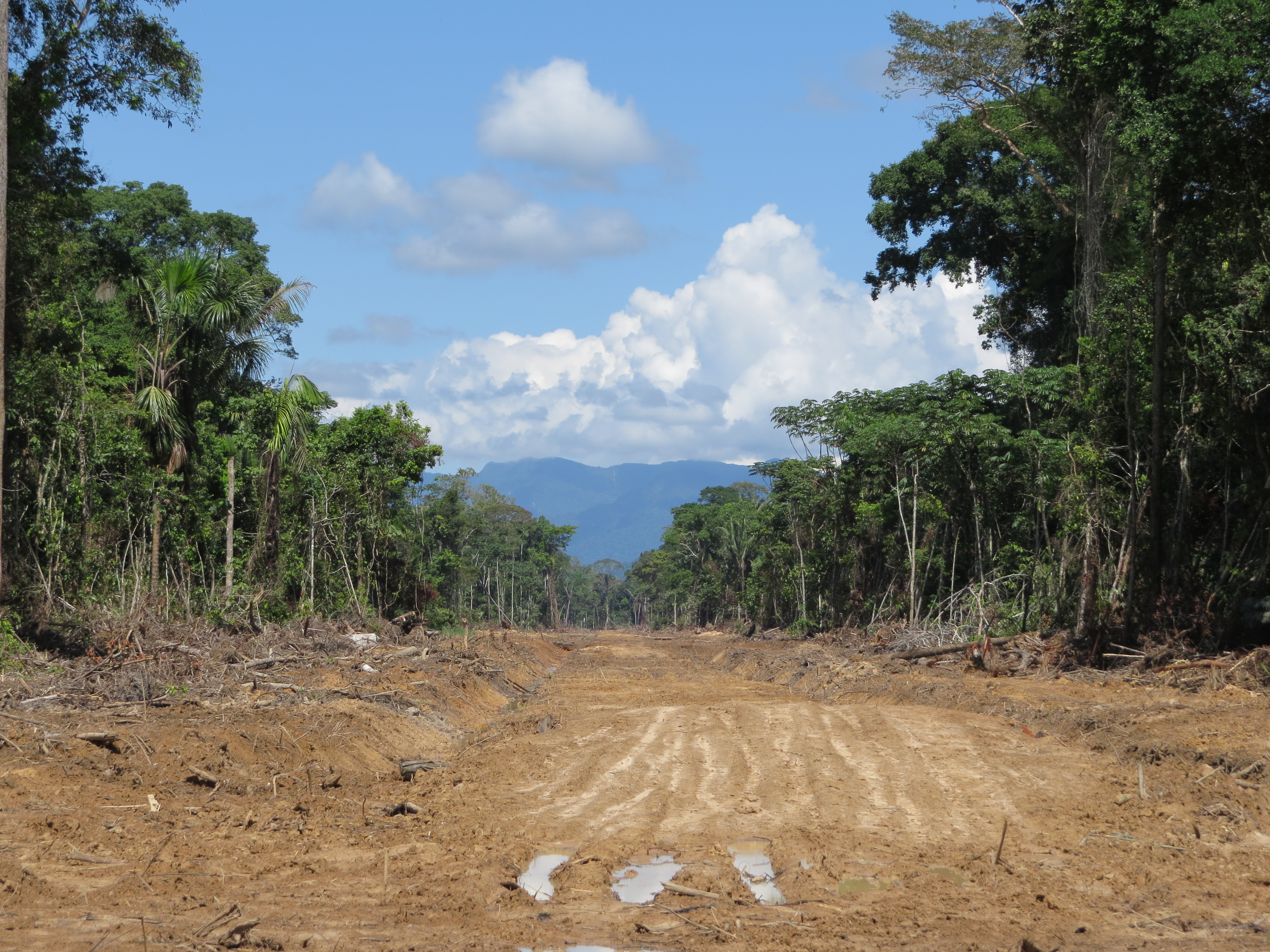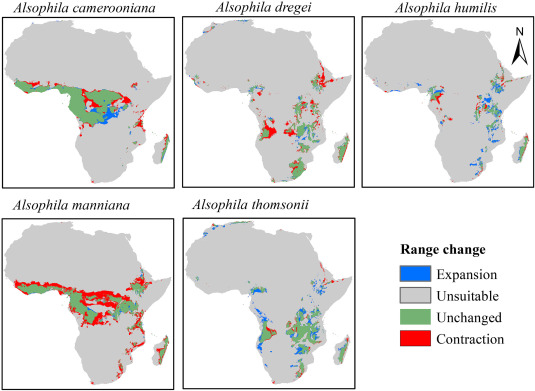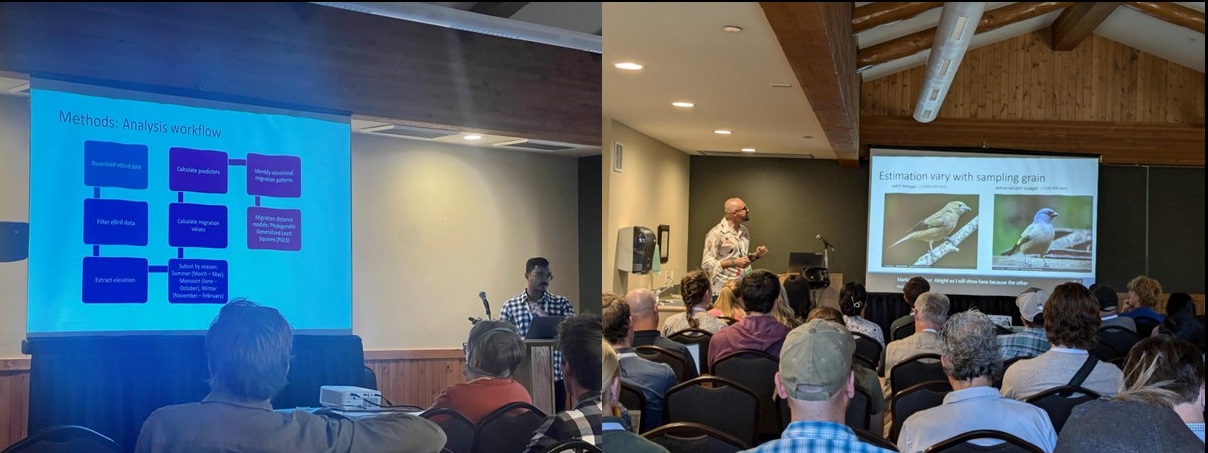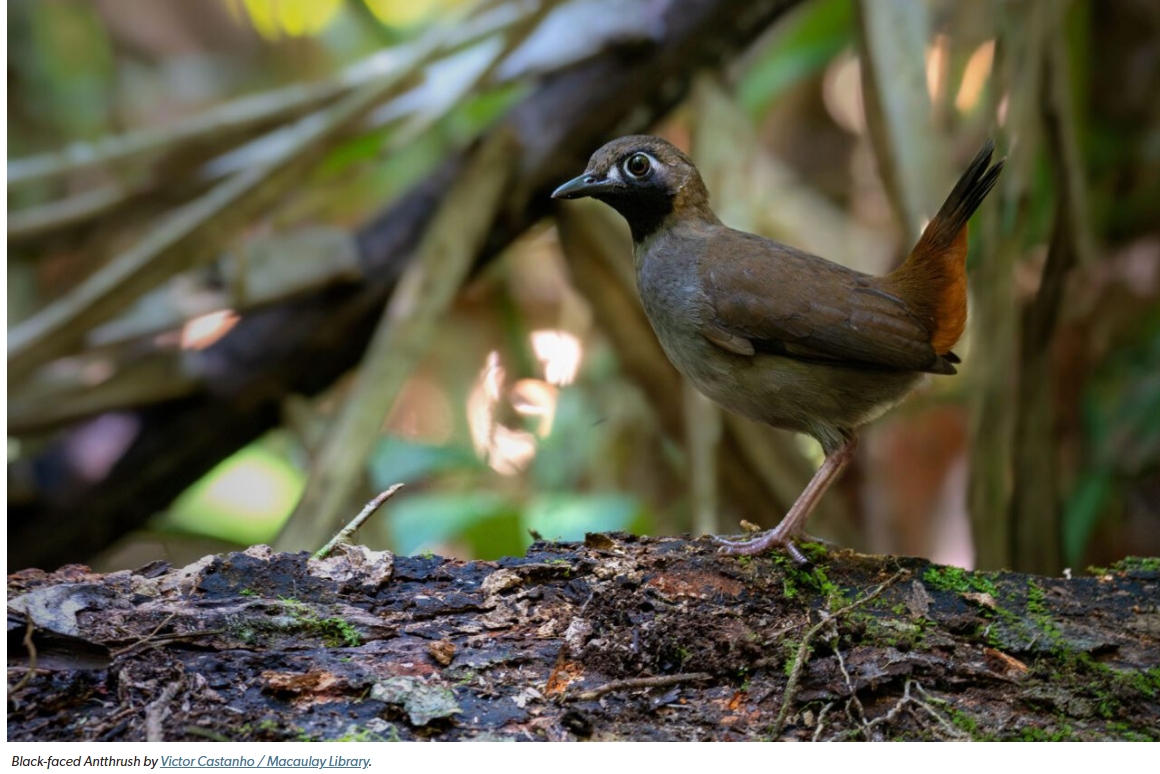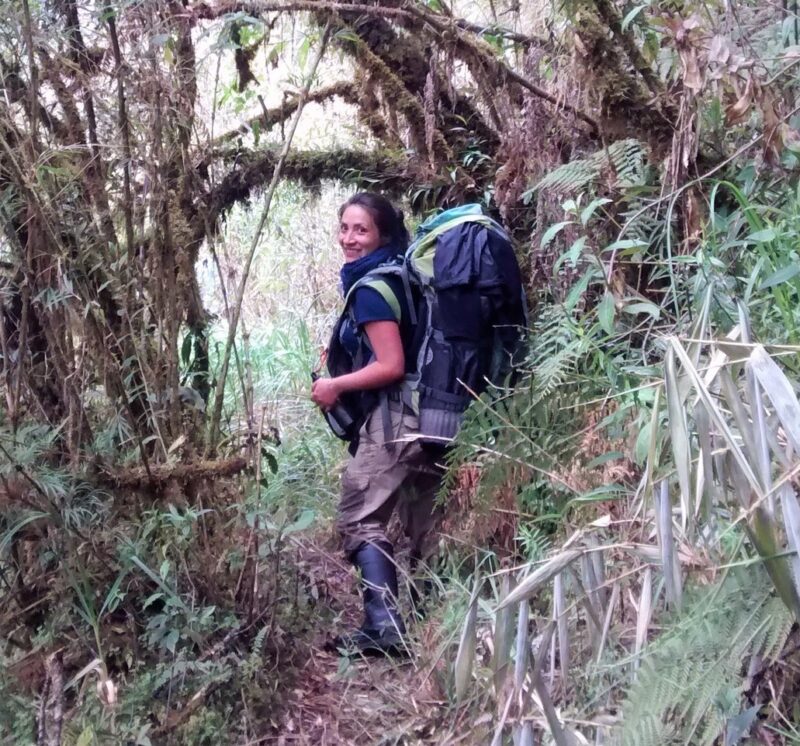Near Tarapoto, Peru, a private company is clearing rain forests to establish a heart-of-palm plantation. The company is interested in mitigating the impacts to biological diversity and has planned to leave 25 m buffers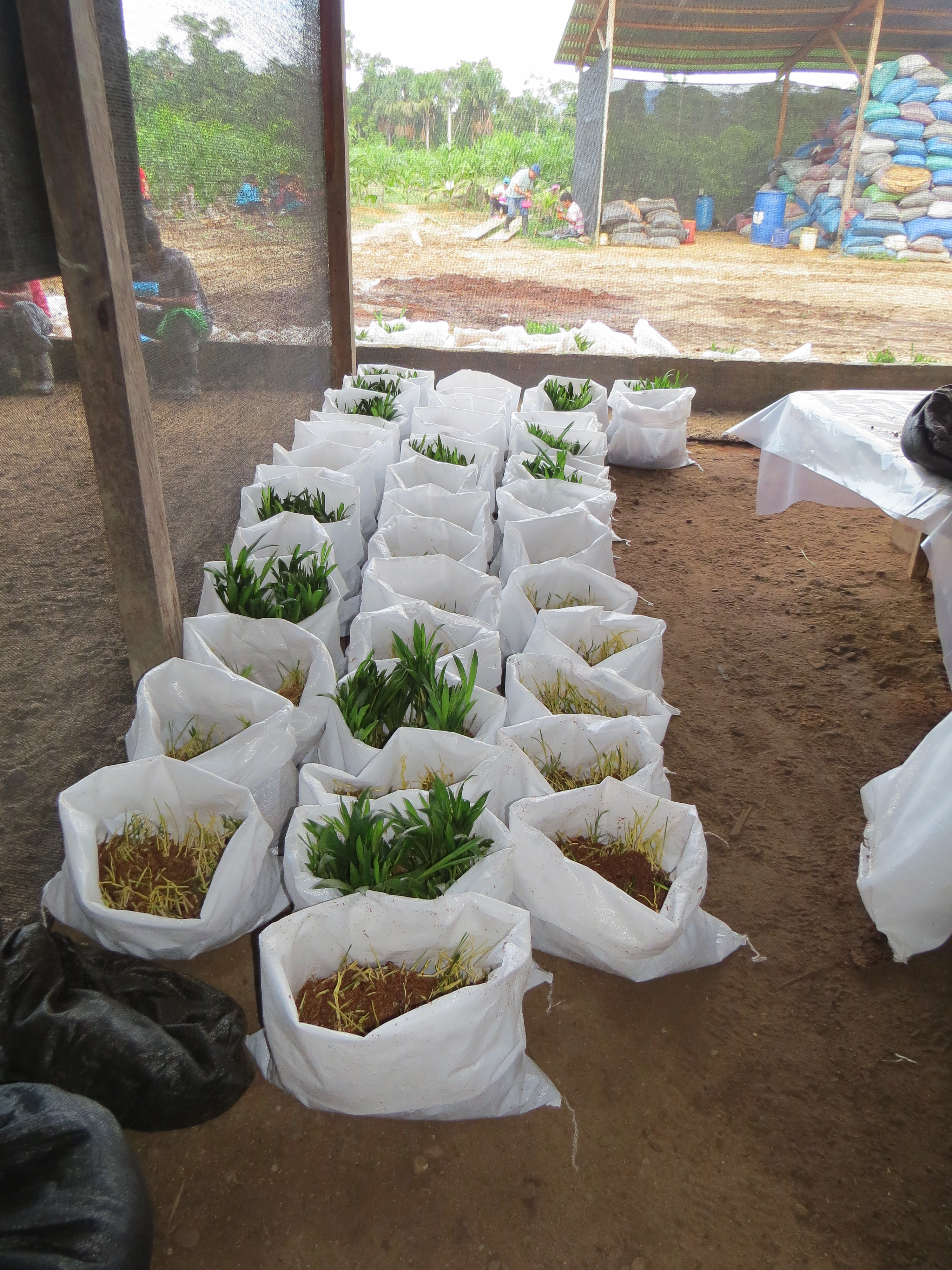 around existing streams and wetland areas. Farah Carrasco Rueda is a PhD student in SNRE and TCD and a Peruvian national. She is interested in evaluating the degree to which these forest strips in agro-development can help to provide habitats for bats and maintain ecological function (e.g. seed dispersal services). This past summer she conducted a pilot study in the private palm development project. Currently, the road into the forest is being built and some lands are being cut and planted.
around existing streams and wetland areas. Farah Carrasco Rueda is a PhD student in SNRE and TCD and a Peruvian national. She is interested in evaluating the degree to which these forest strips in agro-development can help to provide habitats for bats and maintain ecological function (e.g. seed dispersal services). This past summer she conducted a pilot study in the private palm development project. Currently, the road into the forest is being built and some lands are being cut and planted.
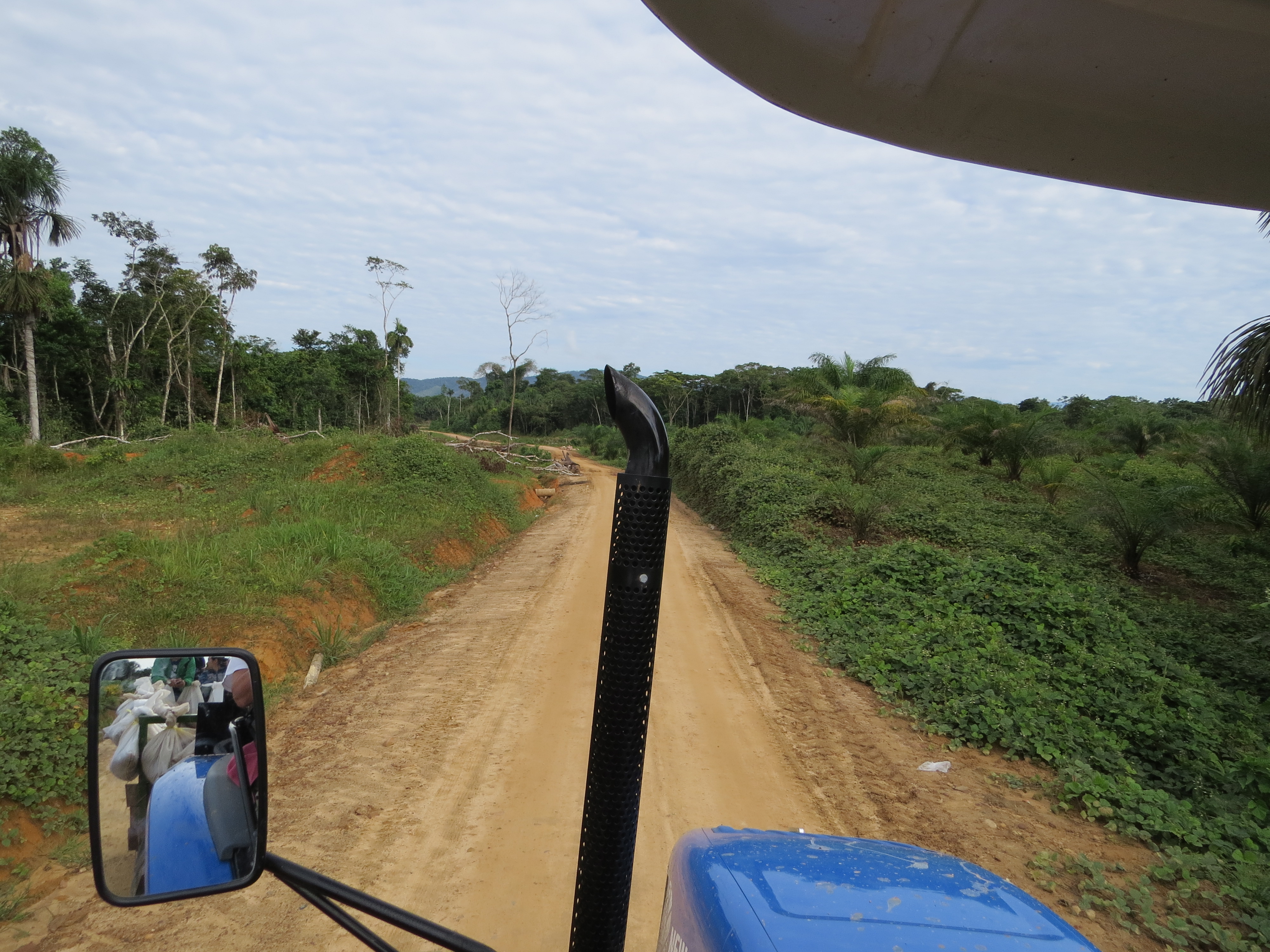 In July, I visited her site and got a first-hand look at the challenges of working in the site, as well as the scale of operations. The trip in was atop a large tractor that was carrying hundreds of Bactris palm seedlings for planting at the site. We passed construction crews building a bridge over the river, and numerous trucks and road crews building the main access route in. The felling of enormous rain forest trees and the opening of larges areas for planting was so recent that it almost seemed unreal. After about 90 minutes on the tractor, we arrived to the camp site where company workers were housed. One cook, plastic covering for tents and dining area, a nearby stream for washing, a few chickens and dogs, plus a dozen or so workers characterized the camp.
In July, I visited her site and got a first-hand look at the challenges of working in the site, as well as the scale of operations. The trip in was atop a large tractor that was carrying hundreds of Bactris palm seedlings for planting at the site. We passed construction crews building a bridge over the river, and numerous trucks and road crews building the main access route in. The felling of enormous rain forest trees and the opening of larges areas for planting was so recent that it almost seemed unreal. After about 90 minutes on the tractor, we arrived to the camp site where company workers were housed. One cook, plastic covering for tents and dining area, a nearby stream for washing, a few chickens and dogs, plus a dozen or so workers characterized the camp.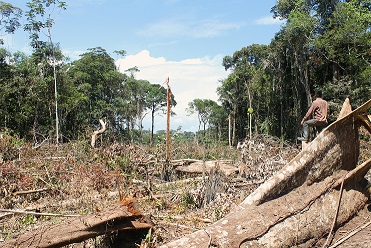
Nearing the end of her first field season, Farah had established replicate blocks with sites along streams in forest, at edges of current and future forest buffers, and in sites 50 m away from streams. The latter sites are still within forest, but targeted for development, or have already been cut. The results are too “new” to tell a story, but the field season resulted in more than 50 nights of trapping (and releasing) bats with more than 1300 captures, including a number of rare species! Stay tuned for more results from the pilot study. Farah’s study was funded by UF’s Tropical Conservation and Development program.
